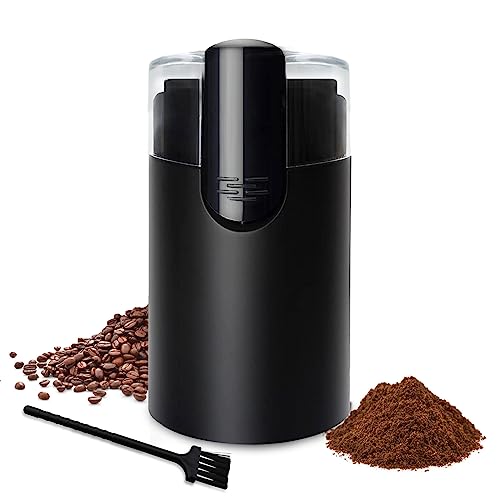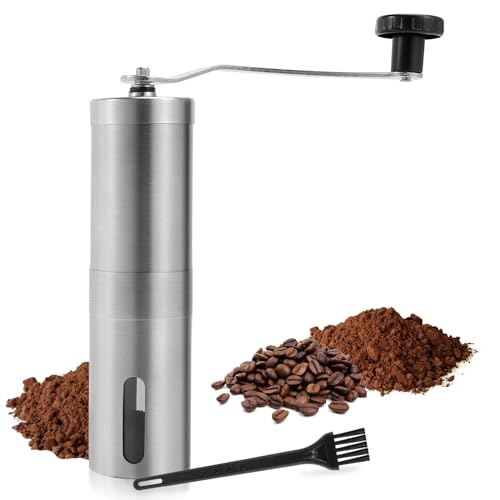It's The Ugly Truth About Ceramic Grinder
페이지 정보
Writer Bradford Shaw 작성일24-08-08 16:02 View68 Reply0본문
 The Advantages of a Ceramic Coffee Grinder
The Advantages of a Ceramic Coffee GrinderCeramic grinders are known for their long-lasting durability and enduring. They are more durable than steel blades and they don't rust when exposed to warm temperatures. However, they're not as sharp as stainless steel.
 A dual-tool grinding machine consists of a ceramic wheel designed for rough grinding and a flexible wheel for finishing grinding. This new solution allows for the machining of shaped surfaces with variable curvature on one machine tool.
A dual-tool grinding machine consists of a ceramic wheel designed for rough grinding and a flexible wheel for finishing grinding. This new solution allows for the machining of shaped surfaces with variable curvature on one machine tool.High-strength blades
The high-strength blades of a ceramic grinder are made of a tough material that keeps its sharp edge for longer than steel. This feature preserves the quality of Aigostar Portable Electric Coffee Grinder - Stainless Steel - like this - beans, which is a crucial factor to consider when selecting a mill. This feature helps to ensure a consistent grind, which is vital to ensure a perfect process of brewing. This is especially important when making espresso, since the uneven grind can result in poor extraction.
The durability of a ceramic grinder also makes it easier to clean than other grinders. This is due to the fact that ceramic burrs aren't susceptible to contamination by rust or other metal particles. Additionally, non-metal blades don't leave marks on stone or tile surfaces, which can require further cleaning. Ceramic blades are also less susceptible to corrosion and won't taint your coffee's taste.
Ceramic blades are a relatively new product, first designed for industrial processes that required round rotating blades. They were later made available to kitchens at home. These blades are more durable, however their price and time-to-use should be considered. The long-term benefits may be worth the expense of a ceramic knife.
All ceramics start out as clay or powder which is then mixed with water or another binding agent before being pressed into their final shape. The resulting "green" ceramics are soft and difficult to machine and therefore are typically fired or "sinterned" in order to make them harder. Then, they are able to be machined relatively easily.
Ceramics are utilized in a variety of manufacturing processes, from semiconductors to surgical instruments. Zirconia is a very robust and durable material. Zirconia can be fabricated into components by a variety of methods, such as laser cutting, scribing, breaking, as well as mechanical cutting. The components can be polished and examined to determine the microstructure of the inside. This allows the exact properties of the ceramic be identified.
Non-stick coating
The nonstick coating made of ceramic on a grinder is an essential feature for herb enthusiasts because it helps prevent resin build-up. It is easy to clean and does not get rusty, unlike other metals. It is also odorless and durable, and resistant to chemicals and scratches. However, not all nonstick coatings are the same. It is essential to know the differences between various types of coatings, and the number of layers and whether they are reinforced or not.
Nonstick coatings are a part of the time of Greek cookware. Archeologists have discovered a variety of pots with coatings that stopped the dough from sticking to the pan. However, the modern nonstick coating was accidentally discovered in 1938 when a Chemours employee named Roy Plunkett accidentally created polytetrafluoroethylene (PTFE). This high-density and heat-resistant chemical compound has an exclusive property: it resists the formation of oil droplets on its surface. It was trademarked as Teflon and was first used in cookware in the 1960s.
Nonstick grinding materials are used in a variety of industrial manufacturing processes. These include form grinding, which is a specific cylindrical grinding process that produces parts in the exact shape of the desired product. There are a variety of different types of material utilized to create these components which include Yttria stabilized zirconia and Alumina. These materials are low-cost, have excellent wear resistance and are chemically stable.
Ceramic grinding tools can also help to control the heat generated during the milling process. It is crucial to have a suitable cooling system in order to maintain the integrity of your workpiece as well as extend the life of your tool. This is because excessive heat can cause the pore structure of the grinding wheel to crack, resulting in a loss of dimensional accuracy.
SLX has developed the V2.5 ceramic nonstick coating for their grinders. It functions similar to your typical Teflon fry pan. The coating is 100% inert and does not contain PTF or PFOA. FDA certified safe for contact with food items and is backed by a lifetime guarantee. The SLX grinders are also engraved with the PTFE patent number and lot number to verify.
Easy to clean
Ceramic grinders are simpler to maintain than steel ones, because they don't store oil and are less susceptible to heat buildup. However, even these types of grinders require regular cleaning to ensure they are in good condition. To avoid a sticky mess, you must clean your grinder at least once a week. This will keep it clear of contaminants, and won't alter the flavor or aroma of your marijuana.
Take off the lid, hopper and any removable gaskets. Clean these parts with soapy, hot water and then rinse thoroughly. After washing your grinder, you can use the brush to scrub the burrs as well as the interior. Rinse and dry your grinder thoroughly to prevent corrosion.
Ideally you should use a firm brush or paintbrush to get rid of stubborn gunk from difficult-to-access areas of your grinder. When you're done the task, use a vacuum or hose attachment to soak up any remaining residue. Be careful not to pick up any screws or parts of your grinder. After you've finished, your grinder will look like new.
If you don't have a vacuum cleaner or brush you can boil your metal grinder to clean it. To do this, fill a pot with warm milk and heat it up to around 150 degrees Fahrenheit (66 Celsius). Submerge the metal grinder into the liquid when the temperature is right. After about an hour, take off the grinder and scrub it with the brush. Then, wash it thoroughly with hot water. Dry it completely.
If you don't want to make use of chemicals to dry your coffeee grinder, you can use the back of an AC unit or a hairdryer. Wipe down the hopper and the bin with an unlinty cloth. Avoid using the blower nozzle near moving parts since it could melt paint or plastic. You can also use a commercial cleaning solution, such as the ones used by coffee shops, to remove the oily residue.
Durable
Ceramic grinders do not rust and are not susceptible to corrosion. Ceramic is also known for its superior hardness. This makes it ideal for grinding applications that require precision. Ceramic grinders are thus preferred by professional baristas and home cooks. They are also cheaper than stainless steel grinders, which makes them a great choice for budget-conscious buyers.
The durability of a ceramic grinder is largely dependent on its type of construction. The material used to construct the blades can affect how long they last and how sharp they are. This is the reason it's essential to choose a grinder made of ceramic with high-quality stones that are properly seated within the grinder. It is also crucial to keep your grinding wheels cool and clear of debris by using cutting and lubrication fluids. The ceramics inside a ceramic grinder can be damaged due to excessive heat, which is why it's essential to select a low speed setting to limit the amount of friction created.
Ceramic burrs are also less thermally conductive than stainless steel ones. This feature can help maintain the desired flavor characteristics of the grinding process by reducing the chance that the coffee compounds could be damaged by overheating. Additionally they are more resistant to wear and tear, allowing them to retain their sharp edge for longer.
Ceramic grinders also produce fewer fines, and store less oil, resulting in cleaner grinding and less residue left on the grinder. They are also easier to clean, and maintenance costs can be cut substantially compared to steel-based grinders.
Ceramic grinders can withstand higher temperatures compared to stainless steel. This makes it a great option for areas that have a wide range in temperatures at ambient. This benefit is especially beneficial for espresso-based drinks which are generally brewed at higher temperatures than other varieties of coffee.
While there are benefits to each type of grinder, it's important to weigh both the advantages and disadvantages of each. The stainless steel grinders generally come with a lower upfront cost and offer a premium feel, but they may be more dull or damaged easily, which can lead to increased maintenance costs over time. Ceramic burr grinders last a long time and provide a consistent size of grind, however they may be more costly initially.
Reply List
No message.

